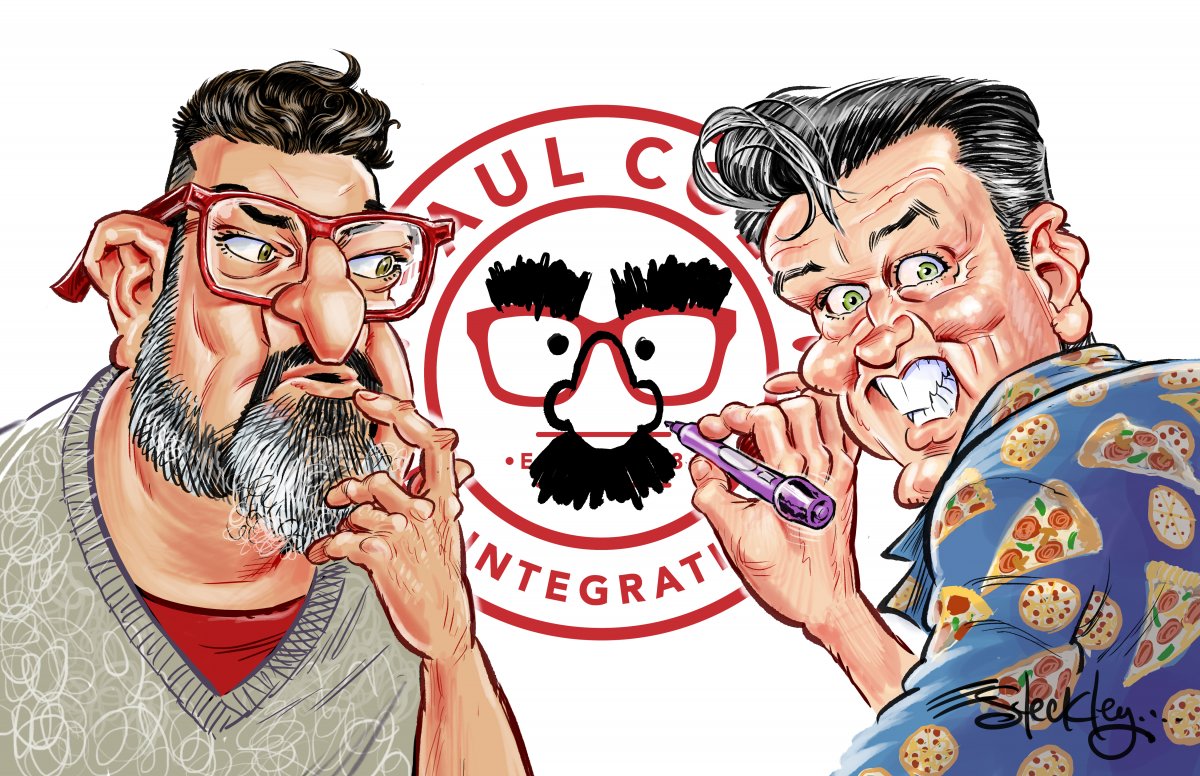[vc_row][vc_column][vc_column_text]Anonymous surveys about employee’s mental health are not enough to combat the risk of burnout, says Manu Varma, Principal Strategist Customer Enablement of Bettr.me
As many Canadians begin the seventh month of working from home, there are numerous questions on people’s minds: How can I stay motivated? When can we go back into the office? Will we ever go back into the office?
While numerous businesses have been using company-wide surveys to gauge how employees are feeling, Varma says that real-time, every day monitoring is a more effective and accurate way to get a sense for how people feel.
“I think companies need to move past just advocating for mental wellness, but actually be accountable for it. Be less passive and be more active in how they’re maintaining their employees’ wellness,” says Varma.


That’s where Bettr.me comes in. The integrative platform tracks the day to day progress of tasks and the emotions employees feel while doing them. This helps team members be more self-aware of their strengths and preferences. By doing so, employers can gather a better understanding of what project each person is most capable and happy to work on.
The transparent system is viewable by all employees, so everyone from the new guy to the CEO can see where each other is able to excel and use their skill sets to the best of their abilities.
Through understanding real-time sentiments about everyday tasks, Varma hopes that employers can build a better understanding of employees’ overall wellness, rather than just a snapshot of how they feel every once in a while.
“I think what businesses are doing wrong is they’re still designing their workforces for efficiency and productivity, whereas it should be really focusing on resilience,” says Varma. “Bettr.me helps this whole concept of resilience because people are looking for purpose more than ever.”
Through helping bring wellness to the forefront of the workday with Bettr.me, Varma has found his own purpose.
For this week’s Entrepreneur of the Week spotlight, Bay Street Bull spoke with Manu Varma, Principal Strategist Customer Enablement of Bettr.me about the importance of reducing the risk for employee burnout and how to bring joy back into the workplace, whether that be at home or in an office.[/vc_column_text][/vc_column][/vc_row][vc_row][vc_column][vc_text_separator title=”Q&A” color=”turquoise” style=”dashed” border_width=”4″][/vc_column][/vc_row][vc_row][vc_column][vc_single_image image=”19519″ img_size=”full”][/vc_column][/vc_row][vc_row][vc_column][vc_column_text]Could you explain Bettr.me and how it is different from what else is on the market at the moment?
A lot of companies right now are trying to monitor employee sentiment through surveys and other tools. Our approach to monitoring employee morale is very different. The surveys are quite problematic for a couple of reasons. One, typically they’re anonymized. So how do you actually make change when things are anonymous? The second piece is that surveys are a snapshot in time. Whereas our approach is looking at real-time sentiment that’s trending. So you can actually look at leading indicators before things are too late. For us it’s less about productivity and more about understanding what brings people joy at work. Related to that, it’s also focused on what and where some of the stumbling blocks people are falling on while celebrating the wins people are having.
It’s really a platform that tracks real-time sentiment and pinpoints what your employees enjoy working on. It is designed to capture sentiment where you work most. So if your calendar is driven, we have an integration tool into Google Calendar and Office 365 so we can tap in and place check-in points throughout the day. You don’t have to log into another app or go to another platform for us to really get a sense of how things are going.
What we’re doing from a social interaction perspective is capture the benefits of connection and validation and blend that with the benefits of journaling, which gives you that ability to be introspective and then also innovate and inspire. We are bringing those benefits together on this kind of interactive digital platform, which does so much to not only build great teams, but get a sense of what drives people’s wellness at work while also bridging that social distance while we work remotely.
What inspired you guys to leverage a social media kind of approach when you were creating this?
It started off as an experiment almost five years ago. Anybody that’s working in professional services will understand the concept of billing time back to a customer, where you complete your work and log time to bill your hours. We found that this concept was kind of offensive to employees, that they were not trusted to put in the agreed upon hours. There was also no benefit to the employee other than collecting their money. We felt that more could be done with this logging data. So we started monitoring tasks, time to completion and emotions while doing it. Today, we have over 2 million hours worth of data that has helped kind of keep our retention rate high at about 90%.
We’ve now gotten down to the granularity where I can tell based on an employee’s logging, a sense of whether they prefer to work in health, life sciences or retail, what they want to function as: a business analyst or a project manager. We can see what really brings you joy at work. There’s no bigger driver than occupational wellness and doing things that are meaningful to you. And so that’s where it started.[/vc_column_text][/vc_column][/vc_row][vc_row][vc_column width=”1/2″][vc_single_image image=”19517″ img_size=”full”][/vc_column][vc_column width=”1/2″][vc_column_text]Bettr.me allows employees to be quite introspective when making selections and saying, am I happy right now? Do I literally hate doing this right now? What was that gap that you filled when you figured out we have to take a person to person approach to building productivity?
To give yourself that time to be introspective is key. It stimulates the same cognitive lift you get from journaling. This is just a way to digitize that approach. For a lot of companies, there is a bit of fear where they don’t really want to open up that Pandora’s box of asking their employees if they like their job or if they feel okay. But we have seen now the benefits of giving your employees the tasks they enjoy and flexing muscles that ultimately open opportunities and spark innovation.
It’s not about getting rid of tasks that people don’t enjoy doing at work. It’s about giving them more work that they enjoy. So for example, you know, if there’s a muscle that I enjoy flexing at work, give me that opportunity to flex it. If there’s muscle, I want to develop and capacity build also give you that opportunity.[/vc_column_text][/vc_column][/vc_row][vc_row][vc_column][vc_column_text]What do you think the biggest mistake is that companies are making right now as they’re managing their employees from home?
I think they’re relying too much on anonymized surveys and pulse checks, which doesn’t give you reliable, valuable data that can inspire real action. They’re looking at large summaries of sample data that are snapshots in time and not actually hearing their employees and accessing that. So for example, with better.me, one of the purposes for us, was to determine the right course of action for returning to the office. There’s a lot of insecurity in terms of how employees are feeling emotionally about maybe taking transit, what’s personal protective equipment around in my workplace will look like, or if there will be any social distancing and what would that look like? Being able to express that in real time with better.me companies can get and change protocol to monitor and ensure employees feel safe on an ongoing basis.
When we’re talking about mental wellness, it has been obviously a massive topic of conversation over the past few months. Why should employers at this point focus on wellness possibly even over productivity?
I think what businesses are doing wrong is they’re still designing their workforces for efficiency and productivity, whereas it should be really focusing on resilience. Bettr.me helps this whole concept of resilience because people are looking for purpose more than ever. Mental health and wellness is a conversation that has now been exacerbated by COVID-19 as it has impacted anxiety, stress, depression and burnout. But all those things already existed in the workforce and have only been exacerbated. So whether I’m an office worker and now have been told I need to work at home, or if I was in a role where I was always on a plane and now I can’t travel, this has impacted my whole lifestyle and that can be quite jarring. I think companies need to move past just advocating for mental wellness, but actually be accountable for it. Be less passive and be more active in how they’re maintaining their employees’ wellness.[/vc_column_text][/vc_column][/vc_row][vc_row][vc_column][vc_single_image image=”19518″ img_size=”full”][/vc_column][/vc_row][vc_row][vc_column][vc_column_text]And I’m going to kind of switch gears here, just to talk about the software more in depth. Bettr.me has a dashboard that shows an employee overview. How did you develop this and the key metrics?
Everyone has an individual dashboard, and it is completely open so that you can see everyone’s dashboard from associate to CEO to really convey a transparent culture. There are also team dashboards. When we work off the understanding that an employee should always have the opportunity to be learning, doing, and sharing, there’s some really great leading indicators that can save an employee. You can look, at a glance for example, if somebody is solidly just doing day in and day out, week in, week out, they’re probably at risk of burnout, right? So that’s just one example. Secondly, if no one’s learning and I don’t see a lot of hours being logged around learning, it’s a bit of a leading indicator flag for me that we’re not innovating. If we don’t continue to innovate—especially in our business in consulting—we run the risk of becoming outdated. Thirdly, leaders should be mentoring and sharing their information and hopefully they’re having a good time while doing it. If not, maybe they’re in the wrong role. So just from a glance, I can get three really interesting leading indicators of the health of my overall business and the health of my people.
Was there anything that I didn’t ask you that you wanted to mention about Bettr.me or about the state of mental wellness as we’re working from home?
Yeah, we’re trying to change the nature of the game and show businesses there’s a better way to do things. Leveraging employee wellness, will translate into higher customer satisfaction, scores, higher retention for their employees and so on. Overall better work environments and working cultures can be magnetic and really become a place where people can flourish. [/vc_column_text][/vc_column][/vc_row][vc_row][vc_column][vc_separator color=”turquoise” style=”dashed” border_width=”3″][/vc_column][/vc_row]













